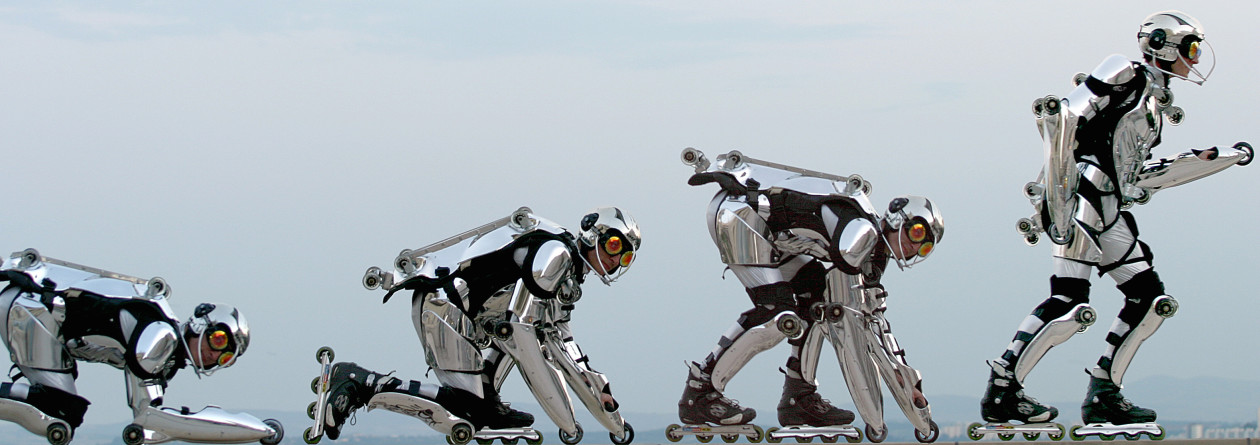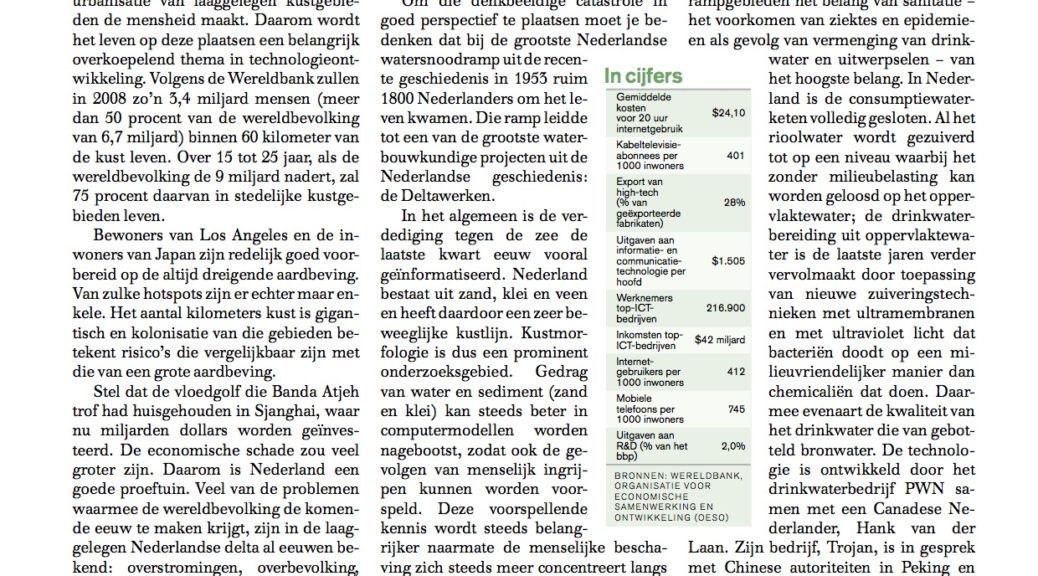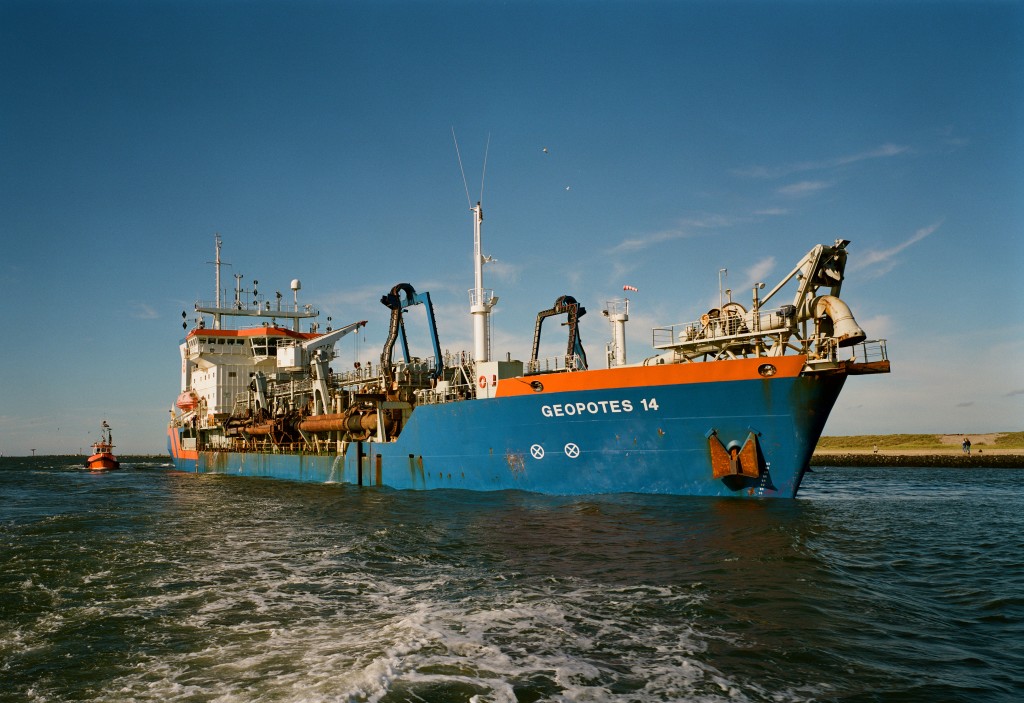Coastal Urbanization Technology
The day after Christmas, a tsunami triggered by an earthquake deep under the Indian Ocean came crashing down on the Asian coast. It left behind a trail of death and destruction and the firm realization that the world-wide urbanization of low coastal areas renders humanity completely vulnerable to the forces of nature. Living in close proximity to the world’s seas and oceans will become an important theme in technology development in the 21st Century.
The World Bank predicts that by 2008 some 3.4 billion people (over 50% of the world population) will be living within 40 miles of the coast. Less than ten years later, with the world population approaching nine billion, this number will reach 75%.
People living in LA and Japan are reasonably well prepared for a disaster as they are accustomed to living with the threat of earthquakes. However, hotspots like these are the exception rather than the rule. The coast stretches out over thousands upon thousands of miles and the urbanization of these areas brings with it a whole new set of dangers.
Coastal Defense
If the tidal wave that wreaked havoc in Banda Aceh had showed up at the coast of Sjanghai instead, where billions of dollars are invested, the economical damage would have been beyond compare. How to prepare for such a scenario? Many of the dangers and problems confronting the world population in this new century have long been understood in the Dutch Delta (southwest Netherlands). People living in coastal communities in other parts of the world can benefit greatly from the experience of the Dutch in preventing and managing floods, over-population, traffic congestion, infectious diseases and unhealthy urban eating patterns, to name a few.
With 1184 inhabitants per square mile, the Netherlands is the third most crowded country on earth, following Japan and South Korea. Over two thirds of the country is below sea level. A flood will inevitably cause the living hole the Dutch have pumped dry to fill up again. Apart from housing a lot of people, this tub, with a base of 8,500 square miles (an area measuring a mere 93 by 93 miles), holds a considerable amount of investment.
The gross investment in fixed capital (installations, buildings and infrastructure) comes up well over a hundred billion dollars. Measured in purchasing power, the Netherlands are the sixth most prosperous nation on earth (a position they share with Germany and Austria – according to figures of the OECD). The average income of the population puts the country in the top ten wealthiest nations on earth. Major investments in urban development and infrastructure have spurred an interest in risk assessment. There is comfort in knowing how real the chances are that one of those dikes protecting the man-made landscape will collapse.
Even though the risk is quite small (estimated at once every ten thousand years), the consequences of a possible dike breach are incalculable. Bas Jonkman, civil engineer for Rijkswaterstaat (Dutch Agency for Water and Traffic Management) and Nathalie Asselman, a researcher with Delft Hydraulics, recently simulated a dike breach near the Dutch town of Capelle aan de IJssel. At 22 feet below sea level, the polder land behind the dike constitutes the lowest part of the Netherlands.
The number of residents living in the area flooded in Jonkman and Asselman’s scenario is 942 thousand. Of these, an estimated 485 thousand would not be evacuated in time. The number of casualties was projected at 72 thousand. In a matter of hours, the village would see the water rise by as much as 5 to 6 meters.
To understand the magnitude of such a catastrophe, one should bear in mind that the number of fatalities caused by the largest actual flood disaster in the country’s recent history was a comparatively low 1800. During the North Sea flood of 1953 a number of sea dikes in the southwestern part of the country gave way under a tidal surge caused by a combination of a high spring tide and northwestern storm. The disaster spurred one of the largest hydraulic projects in the country’s history: the Delta Works. The inlets and estuaries in the southwestern part of the Netherlands were closed off by a system of dams and storm surge barriers. Only two main arteries remain open: the river mouth of the Rhine and Meuse near Rotterdam and the estuary of the Scheldt near Antwerp. In 40 years time, the Dutch coastline was decreased by 435 miles. The estuary near Rotterdam, the second largest harbor in the world, was fitted with the most massive, intricate storm surge barrier ever built: the Maeslant Barrier. A fully automatic system uses real-time weather information to close the giant doors in the event of an approaching spring tide.
The last quarter century or so, most every aspect of the sea defense system has become computerized. The soft Dutch soil is made up of a combination of sand, clay and peat, which mean the coastline changes over time. Not surprisingly, scientific interest in coastal morphology in the Netherlands is strong. The reaction of water and sediments (in this case sand and clay) to human interference can be quite accurately simulated. The predictive knowledge obtained will play an increasingly important role as human civilization is concentrated more and more in coastal areas.
The proportionately large scientific interest in meteorology and climatology is due largely to the country’s geographic location. Lower coastal areas are greatly affected by weather and climate changes. Weather and climate systems, like shifting sediments and the current of rivers and seas are chaotic systems that can be described in non-linear models. These models are a popular subject of (mathematical) research.
The pumping stations that keep the Dutch polder from turning into flooded marshland can anticipate prolonged rain spells and mechanical storm surge barriers can be closed in time when a massive storm is approaching. In the construction of dikes, climatological changes are taken into account. The Netherlands have been keeping a log of climatological data since the early 17th Century. Dutch climate researchers are internationally acclaimed. Rob Dorland of the Royal Netherlands Metereological institute is lead author of the IPCC report to come out in 2007. The Dutch interest in weather and climate manifested itself in the country’s early involvement in space projects in the area of atmospheric research and earth observation. In the 60s, the Netherlands made the smart decision of locating the headquarters of the European Space Agency, the European Space Technology Center, in the Dutch coastal town of Noordwijk. In the surrounding area, companies manufacturing instruments for earth observation and astronomic research blossomed.
Water Management
As became apparent after the recent tsunami, insuring a drinking-water supply is as important as alertness and the defense against the sea. Sanitation is crucial in any urban community, but becomes a matter of life and death in disaster areas. Contamination of drinking water with feces leads to the rapid spread of contagious diseases and even epidemics. In the Netherlands the drinking-water chain is a fully closed system. Sewage water is purified to a level at which it can be safely discharged on the surface water. In recent years, the purification of drinking water has been perfected through the use of new, environmentally friendly techniques – using ultra-membranes and ultraviolet light that kills bacteria. As a result, the quality of the drinking water is now comparable to that of bottled mineral water. Behind the technology is Dutch water company PWN who worked on the project with Canadian-Dutch scientist Hans van der Laan. His company, Trojan, is currently talking to the Chinese authorities in Peking and Shanghai. ‘They are very interested in this method of water purification,’ reveals Van der Laan. According to Peer Kamp, head of innovation at PWN, the next challenge will be the removal of all traces of pharmaceutical drugs. With the ageing of the population, the use of these drugs will only increase.
Public Health
Because of its vast urban history, the Netherlands have long been aware of the importance of public health. This awareness manifests itself in the close monitoring of the food quality, the prevention of epidemics and the effective treatment of common diseases. The efforts are financed not only through government funding, but also from collection money of individual funds supporting, for instance, cancer, diabetes, Alzheimer and AIDS research. As the average age of the Dutch population increases, this type of research becomes ever more important. The disproportionately high citation rate of the Netherlands in the international citation indexes proves the work is not done in vain.
Last year, we approached the top 50 influential people in Dutch R&D (in terms of purchasing power) and asked them what they felt the Netherlands should excel in. Mentioned a number of times was an electronics valley in the area surrounding Dutch electronics giant Phillips. This technology haven would include the Technological University of Eindhoven and, across the border, those of Aken in Germany and Leuven in Belgium. New mentions were a food and a medical valley. ‘The Dutch expertise with the combination of stored patient material and molecular biology is unparalleled. In the area of genomics, this could lead to new diagnostics and insights into prevention,’ explains Peter Folstar, manager of the Dutch Genomics Institute. Paul van der Maas, board member of the University Hospital in Rotterdam noted that a first step to creating a medical valley should be to bring the country’s eight university hospitals down to two or three operating under one central management.
Food Safety
To feed the tightly packed population, the Dutch agricultural sector started its industrialization process early. In the 17th Century, large stock farms were established on newly reclaimed land in the north of the country. The novel industry ensured that fresh produce such as cheese and butter and perishables like milk, meat and vegetables were always available at a short distance from the city. In combination with the country’s network of waterways, 17th Century Netherlands already possessed of an intricate production and distribution system capable of feeding an urban society of, at that time, one million people. The Netherlands were truly the largest ‘city’ of Europe. Today, agricultural produce (dairy and meat) and flowers still make up 20% of Dutch export. The country is home to the largest dairy corporation in the world, the Dutch-Danish Campina-Arla. One and a half million Dutch dairy cows each produce around 7 thousand liters of milk a year. The cow itself has become a factory.
In recent years, a large number of outbreaks of foot-and-mouth disease, hog cholera and fowl pest plagued the Dutch agricultural sector. Each outbreak led to the preventative clearing of, in some cases, millions of animals. The very real danger of new infections has instigated intense research into the growth and mutation of viruses. Dutch laboratories are currently leading the way in the area of, among others, influenza, SARS and fowl pest research. With the bio-industry came the use of antibiotics and growth hormones which posed a serious threat to public health. In response to these developments, the authorities introduced legislation and an elaborate monitoring system.
The Netherlands is heavy populated by any definition. In addition to 17 million people, the small country houses 3.7 million cows, 11 million pigs and 18 million chickens. The lessons learned in veterinary healthcare are also applied in the area of human healthcare. HIV and AIDS are considered one of the side-effects of ‘intensive people rearing’, as life in the city means more indiscriminate (sexual) contacts. The University Hospital of Amsterdam, especially, has done a lot of research in this field. Attention is paid to sexually transmitted diseases in general and the treatment of drug addicts in particular.
Intensive stock rearing has further meant a burdening of the environment through the emission of ammonia and the pollution of ground water by nitrates and phosphates. In part under pressure of European legislation, this development has spurred a series of innovations.
Hand in hand with the agricultural sector is an impressive food processing industry that is gradually becoming more intertwined with the pharmaceutical industry. The distinction between food and drugs is slowly disappearing. The Dutch-British firm Unilever is the biggest in this sector. Over the past few years, R&D efforts have been directed at developing food products with specific qualities. One example is milk with added cholesterol reducers and calcium to prevent osteoporosis. It is the beginning of a trend to produce function foods that contributes to the prevention of heart and vascular disease and, at a later stage, possibly also cancer and diabetes. Obesity is perhaps the biggest challenge currently facing the food industry.
Health insurance companies already offer products covering the (additional) costs of these function foods; knowing that they will more than recoup their costs in the long run. With the rapid ageing of the population, the market for function foods is booming, as is the demand for medical home care – an area Philips considers a significant growth market.
Logistics
The Netherlands are a major exporter of agricultural produce and food. Because of its perishable nature, agricultural products need to be transported quickly. Dutch flower growers operate a unique just-in-time system. Flowers cultivated in greenhouses are harvested at night, auctioned off in the early morning and shipped in climate controlled airplanes to arrive in cities such as Tokyo, Moscow and New York ready to be sold in the afternoon.
In the coming years the market farmer will become a process operator: regulating the fertilization and night lighting in his green houses and controlling the harvest on demand system of his genetically enhanced crops based on the market prices he follows real-time via online auctions.
Above anything, the Netherlands are Europe’s depot and transit port for petrochemical products, chemicals and (bulk) goods. To bring these products into the country and export them, the Netherlands have a massive sea port near Rotterdam and an equally impressive airport near Amsterdam. In Europe, Schiphol Airport is surpassed only by the airports of London, Paris and Frankfurt. Rotterdam further has the honor of housing the world’s largest fully automated container terminal. It meets all US security requirements, allowing for an uninhibited flow of goods across the Atlantic Ocean.
The close proximity to a major city forces Schiphol Airport management to walk a political tightrope. The presence of the city of Amsterdam also requires a great deal of technological effort to solve planning conflicts and keep the strain on the environment limited to a minimum by ensuring noise and emissions stay within agreed levels and industrial disaster scenarios are kept in check. The reclaiming of land from the North Sea for airport and other purposes is fast approaching.
The Netherlands has become an economical pressure cooker. Other coastal areas will inevitably follow.
Translation: Angela den Tex, Textenz
Sources:
CBS (Statistics Netherlands): The Netherlands measure 13,040 square miles, 60% of which is protected by dikes and therefore at risk of flooding.
Bas Jonkman and Nathalie Asselman in ‘Land + Water’, 4 April 2004, p. 28-29.
Delta Works: www.deltawerken.com
The World Bank: http://lnweb18.worldbank.org/ESSD/envext.nsf/42ByDocName/CoastalandMarineManagement)
Delft Hydraulics: http://www.wldelft.nl/
Wageningen Agricultural University : http://www.wau.nl/
IHE Institute for Hydraulics Engineering was renamed Unesco-IHE, Institute for Water Education, Delft, Netherlands. The mission of UNESCO-IHE is to contribute to the education and training of professionals and to build the capacity of sector organisations, knowledge centres and other institutions active in the fields of water, the environment and infrastructure, in developing countries and countries in transition. www.ihe.nl
http://www.unileverresearch.com/nl/ R&D-site Unilever
http://www.unilever.nl/www/scripts/content.php?pID=40 corporate site Unilever
KNMI: http://www.knmi.nl/ = Royal Dutch Meteorological/Weather Institute
www.nki.nl Dutch Institute for Cancer Research


